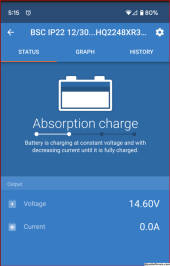sunshine_eggo
Happy Breffast!
I bought three new Li Time 230Ah Plus with LTCP and am having exactly the same experience as you describe. All of them arrive with a voltage around 13.11v. I charge with a Victron IP22 30A charger, and when it completes the cycle, the battery reads 12.89v or 12.96v ----this has been the case with all three of these batteries. I connected each to an inverter and run a space heater for a few minutes, and the voltages of each battery, after resting, does tick up to 13.33v or close to it. The outstanding question remains, however, if any of the batteries attained a full charge?
Somehow I am sure the BMS they are using is the culprit here. Is it a problem or a feature? Not sure. Will need to try a capacity test discharge, but am not really happy that I am going through all of this run-around with these batteries. I have several other smaller (100Ah) Li Time and Ampere Time batteries that I have been quite happy with, and without issues like this. The 200A BMS in these units must be programed differently.
Will does recommend this specific model---the Li Time 230Ah with LTCP, on his website---but I have yet to see a video from him specifically talk about this battery, let alone test it and tare it down. Would really be interested if he encounters the same initial experience.
Did you observe it hit ~14.4V while passing current? If so, then they hit full or "dang near full."
Have you tried charing to 13.8V with a 2 hour fixed absorption period?




